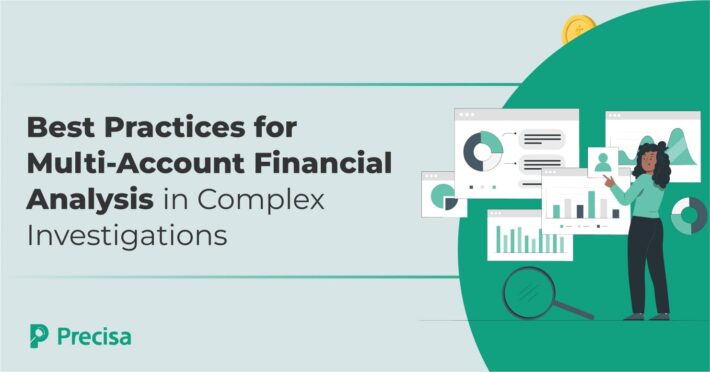The Role of Money Mules in Economic Offences: Understanding the Risks

As economic offences get more penetrative and sophisticated, financial institutions across the world face increased threats. One of the methods opted for such offences is the exploitation of money mules. This touches financial institutions, businesses, and governments globally, raises questions from the regulatory side, and brings instability to the financial system.
NCRP reported that around 4.5 lahks ‘mule accounts’ were frozen across various banks by the centre last year.
The rising cross-border transactions and penetration of digital payment systems have made detecting and preventing money mules a much more complex task.
To tackle it efficiently, financial institutions must employ robust measures like real-time transaction monitoring, AI-compliance tools, fraud detection mechanisms, etc.
Let us discuss the role of money mules in economic offences, the risks posed, and measures that could be applied to reduce those.
Money Mules: What Are They?
Money mules are individuals who move illegally acquired funds on behalf of another, generally as part of a large-scale money laundering operation.
A money mule transfers funds from one account to another, making the financial trail progressively more complicated for legal entities to trace illicit money back to its source.
Cybercrime specialists said that in India around 99% of financial frauds would not occur without the existence of mule accounts.
Types of Money Mules
- Unwitting Mules: Individuals tricked into transferring money, often believing they are engaging in legitimate transactions such as processing payments for a remote job.
- Willing Mules: Participants who knowingly move illicit funds in exchange for commissions or financial incentives.
- Complicit Mules: Individuals who actively collaborate with criminal groups, helping them evade detection and bypass regulatory scrutiny.
Irrespective of intent, all categories contribute to financial crimes, making it imperative for financial institutions to implement real-time monitoring systems to detect suspicious transactions.
The Role of Money Mules in Economic Offences
Money mules are instrumental in laundering illicit funds, enabling organised crime, and financing global financial fraud schemes. Their role extends across multiple economic offences, including:
1. Fraudulent Transactions
The funds collected through scams, including phishing attacks, fake investment schemes, romance fraud, etc., are laundered through the money mules.
Victims unwittingly transfer money to mule accounts while believing they are making actual payments to whom they wish to pay, only to see the funds go into criminal networks.
It’s estimated that ₹17,000 cr have been defrauded through cybercrimes with 40,000 money mule accounts over a year.
2. Terrorist Financing
Some money mule operations have been linked to funding extremist organisations. Criminal networks use money mule accounts to bypass AML measures and fund extremist activities.
Funds move through layered transactions, making it difficult to track their origins.
3. Drug and Human Trafficking
Billions in illicit revenues are generated by the illegal drug trade and human trafficking operations on an annual basis.
The syndicates rely on mules to process and distribute their funds, which tends to blur lines to regulators regarding who, ultimately, benefits from such crimes.
4. Business Email Compromise
It involves fraudsters impersonating company executives or vendors to trick employees into wiring money to fake accounts.
Once funds are transferred to money mule accounts, they are quickly moved across multiple accounts to obscure their trail, making recovery difficult.
5. Cryptocurrency Laundering
Money mules are used to convert illicit funds into digital assets, which are then transferred across multiple wallets before being cashed out.
Many mule accounts show high-value daily cash deposits, which are quickly transferred to crypto asset service providers to obfuscate the trail. They are increasingly used in cross-border money laundering, making it harder for regulators to trace illicit funds.
Money Mules: Rising Concerns for FIs
RBI has raised alarms about the growing prevalence of mule accounts and their involvement in fraudulent transactions posing substantial risks to financial institutions:
1. Regulatory Compliance Risks
Despite arduous AML and KYC laws, fraudsters can identify loopholes in verification. Ineffective monitoring ultimately leads to penalties, increased oversight by regulatory agencies, and reputation damage. Adapting to evolving compliance requirements is a constant challenge, demanding continuous updates to fraud detection frameworks.
2. Financial Losses
Banks and lenders suffer direct losses from fraudulent transactions, but the impact extends beyond stolen funds. Investigations, legal fees, and compensating affected customers strain resources.
Additionally, fraud-related incidents can trigger higher insurance premiums and investor scepticism, reducing financial stability over time.
3. Operational Challenges
Identifying mules within a vast customer base is difficult, especially when fraudulent activity mimics legitimate behaviour.
Manual processes struggle to detect subtle fraud patterns, leading to inefficiencies and missed red flags. Institutions must also train employees to recognise emerging fraud schemes, adding to operational burdens.
Money Mules: Detection and Prevention Strategies
To counteract money mule networks, financial institutions must deploy the following methods to flag suspicious transactions:
1. Transaction Pattern Analysis
- Detect sudden spikes in account activity or large-value deposits followed by quick withdrawals.
- Identify frequent cross-border transactions that deviate from normal customer behaviour.
- Flag round-number transactions and repeated payments to unknown third-party accounts.
2. Behavioural Monitoring
- Track logins from multiple locations or suspicious devices.
- Identify accounts that exhibit erratic transaction patterns inconsistent with historical behaviour.
- Detect frequent micro-transactions used to test bank fraud detection limits.
3. Enhanced Verification
- Strengthen KYC validation with AI-powered document authentication.
- Conduct real-time digital footprint analysis to verify user legitimacy.
- Implement facial recognition and biometric verification to prevent identity fraud.
Key Takeaways
Money mules are one of the largest facilitators of economic offences, from money laundering to terrorist financing. As digital transactions increase, so do how criminals adapt their methods, and thus, financial institutions must keep pace with the advancement of fraud detection mechanisms.
Precisa’s AI-driven fraud detection solutions empower financial institutions with real-time risk assessment and transaction monitoring capabilities, ensuring a proactive approach to combating money mule activities.
The Bank Statement Analysis identifies unusual transaction behaviours and detects patterns of financial crime, giving volatility scores. Anti-Money Laundering (AML) Analysis further automates risk assessment and flags suspicious activities in real time. Also, Credit Report Analysis cross-verifies borrower details to ensure legitimacy.
Contact us today for a free trial!




